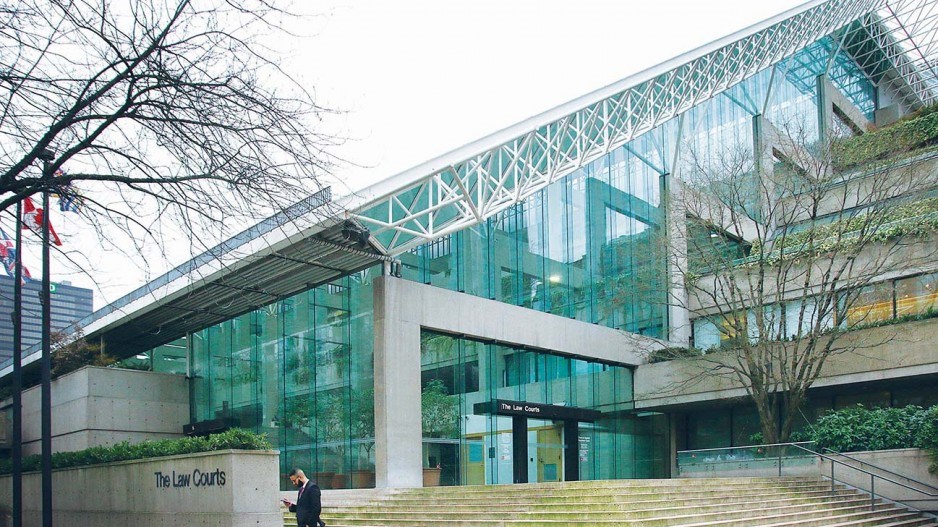One legacy of COVID-19 will be a more streamlined, technologically enhanced justice system with greater public access to justice, say B.C’s legal professionals.
They say the pandemic has shone a light into the system’s dark corners, revealing a system in many cases antiquated and not responsive to a modern society.
It was B.C. Supreme Court Chief Justice Christopher Hinkson who fired the first pandemic salvo on the need for change.
“The court has long been aware of the need to upgrade court technology in order to increase the court’s ability to provide remote and online access to justice,” Hinkson said in a statement April 30.
Both he and Attorney General David Eby agree there has long been insufficient investment in system modernization.
“We have not been funded adequately to take advantage of technology for some time,” Hinkson said.
But, said Eby, a significant move toward use of technology in the courts will be “a very dramatic shift.”
“COVID has already meant the courts have caught up to the 1990s,” he said.
Eby said changes would be most visible to the public in traffic ticket or family law cases.
The pandemic has meant alterations in handling how people taken into custody come before courts on first appearances and bail hearings. Courtroom closures to stop infection spread have led to use of video conferencing.
That has shown people can appear from remand centres or police detachment lockups via technology.
Eby said such appearances in the past have frequently meant getting people to courthouses. He called it an “incredibly challenging logistical problem that has evaded us for years.”
Now, he said, people could appear from detachments, as they already do from places such as remand centres or prisons.
“Because of COVID, this has really been accelerated and everyone is onside in getting this done,” Eby said.
“We’re going to have to make better use of video, for sure,” Hinkson said.
A problem, he said, is that participants all need two computer screens. “We just don’t have enough of them
Hinkson, though, cautioned against going too far.
He stressed the importance of having live witnesses in courtrooms for judges or juries to see and hear. And, he said, with testimony being given remotely, there is always a problem there may be someone off-screen offering witness advice. Hinkson said there have been problems in the U.S. with evidence being adulterated that way.
An advantage of video use, Hinkson explained, is that better use can be made of the judicial complement. He said if a judge or master is due to hear a case in one city and it falls through, video can allow that judge to hear an issue from somewhere else remotely.
Moreover, it costs travel costs and wear and tear on judges and masters, he said.
But, said Hinkson, bandwidth issues in courthouses must be addressed.
“The video just disappears. You have to reconnect,” he said. “It’s not a very satisfactory way to mete out justice. Many courthouses don’t have adequate wiring for hotspots to supplement adequate bandwidth.”
Use of court registries is also shifting. What has long been a paper-based system is now trending toward digital. A document filing system that has not in the past sorted documents will now do so using tools such as artificial intelligence, Eby said.
“It’s going to be a very significant transformation,” he said.
A problem there, Hinkson noted, is the fact the registries’ file system doesn’t marry to the one the judges use. And, he’s not keen on a system that could be controlled by court services over members of the judiciary.
It’s a matter of security, he said. “We’re a little jealous of our whole process and what we have control over.”
As for timelines, Hinkson said it’s a matter of money and how long it takes for issues to be figured out. Funds have been allocated for some work but requests need to go to the provincial Treasury Board for further changes.
Craig Ferris is president of the Law Society of B.C., the province’s legal profession regulator. He said a shift in how hearings can be held could also spell the need for dedicated spaces in firms’ offices with the technology to participate in cases. “That’s different,” he said.
The advantage for clients, he said, is – as with prisoners – a logistical one.
“People won’t have to wait as much or travel as much,” Ferris said.
He said judges are valuable resources and technological shift allows those resources to be better used.
Ferris too agrees the courts “have been tragically underfunded.”
Eby said there has already been a directive that there be no civil case juries until January. Depending on how that works could spell the end of civil jury trials, he said.
“There will be ongoing discussion on whether we need civil juries,” Eby said.
Ferris said technology is an essential component of what lawyers do in serving clients.
He said COVID has highlighted the error in believing that because something has always been done a certain way that it should always be done that way. For example, he said swearing affidavits or wills can be done using technological means whereas lawyers long believed it was sacrosanct that parties be in the same room.
And, with digital filing, he said, the days of lawyers moving around huge boxes of documents are gone. Part of that change, he said, has been the institution of a rule for technological competency of lawyers.
Hinkson said B.C.’s courts are among Canada’s busiest. He said what’s kept them running through the pandemic has been hard work by staff in challenging times.
“I think the people of British Columbia have been very well served during this crisis,” he said.
@Jhainswo




